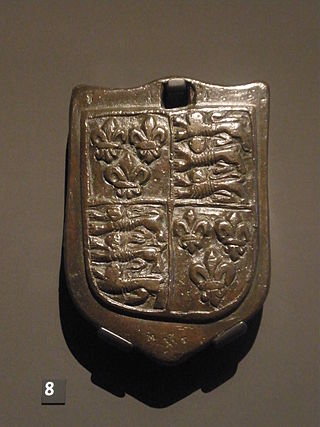
The carat (ct) is a unit of mass equal to 200 mg, which is used for measuring gemstones and pearls. The current definition, sometimes known as the metric carat, was adopted in 1907 at the Fourth General Conference on Weights and Measures, and soon afterwards in many countries around the world. The carat is divisible into 100 points of 2 mg. Other subdivisions, and slightly different mass values, have been used in the past in different locations.

The litre or liter is a metric unit of volume. It is equal to 1 cubic decimetre (dm3), 1000 cubic centimetres (cm3) or 0.001 cubic metre (m3). A cubic decimetre occupies a volume of 10 cm × 10 cm × 10 cm and is thus equal to one-thousandth of a cubic metre.

The pound or pound-mass is a unit of mass used in both the British imperial and United States customary systems of measurement. Various definitions have been used; the most common today is the international avoirdupois pound, which is legally defined as exactly 0.45359237 kilograms, and which is divided into 16 avoirdupois ounces. The international standard symbol for the avoirdupois pound is lb; an alternative symbol is lbm, #, and ℔ or ″̶.

United States customary units form a system of measurement units commonly used in the United States and most U.S. territories, since being standardized and adopted in 1832. The United States customary system developed from English units that were in use in the British Empire before the U.S. became an independent country. The United Kingdom's system of measures was overhauled in 1824 to create the imperial system, which was officially adopted in 1826, changing the definitions of some of its units. Consequently, while many U.S. units are essentially similar to their imperial counterparts, there are significant differences between the systems.

The Polish złoty is the official currency and legal tender of Poland. It is subdivided into 100 grosz (gr). It is the most traded currency in Central and Eastern Europe and ranks 21st most-traded in the foreign exchange market.

A grain is a unit of measurement of mass, and in the troy weight, avoirdupois, and apothecaries' systems, equal to exactly 64.79891 milligrams. It is nominally based upon the mass of a single ideal seed of a cereal. From the Bronze Age into the Renaissance, the average masses of wheat and barley grains were part of the legal definitions of units of mass. Expressions such as "thirty-two grains of wheat, taken from the middle of the ear" appear to have been ritualistic formulas. Another source states that it was defined such that 252.458 units would balance 1 cubic inch (16 cm3) of distilled water at an ambient air-water pressure and temperature of 30 inches of mercury (100 kPa) and 62 °F (17 °C) respectively. Another book states that Captain Henry Kater, of the British Standards Commission, arrived at this value experimentally.
The ounce is any of several different units of mass, weight, or volume and is derived almost unchanged from the uncia, an Ancient Roman unit of measurement.

Avoirdupois is a measurement system of weights that uses pounds and ounces as units. It was first commonly used in the 13th century AD and was updated in 1959.

A bushel is an imperial and US customary unit of volume based upon an earlier measure of dry capacity. The old bushel is equal to 2 kennings (obsolete), 4 pecks, or 8 dry gallons, and was used mostly for agricultural products, such as wheat. In modern usage, the volume is nominal, with bushels denoting a mass defined differently for each commodity.
The batman was a unit of mass used in the Ottoman Empire and among Turkic peoples of the Russian Empire. It has also been recorded as a unit of area in Uyghur-speaking regions of Central Asia. The name is Turkic, but was also sometimes used for the equivalent unit in Persia. The equivalent unit in British India was anglicized as the maund. The value of the batman varied considerably from place to place.

The stone or stone weight is an English and British imperial unit of mass equal to 14 pounds (6.35 kg). The stone continues in customary use in the United Kingdom for body weight.
Mesures usuelles were a French system of measurement introduced by Napoleon I in 1812 to act as compromise between the metric system and traditional measurements. The system was restricted to use in the retail industry and continued in use until 1840, when the laws of measurement from 1795 and 1799 were reinstituted.

The apothecaries' system, or apothecaries' weights and measures, is a historical system of mass and volume units that were used by physicians and apothecaries for medical prescriptions and also sometimes by scientists. The English version of the system is closely related to the English troy system of weights, the pound and grain being exactly the same in both. It divides a pound into 12 ounces, an ounce into 8 drachms, and a drachm into 3 scruples of 20 grains each. This exact form of the system was used in the United Kingdom; in some of its former colonies, it survived well into the 20th century. The apothecaries' system of measures is a similar system of volume units based on the fluid ounce. For a long time, medical recipes were written in Latin, often using special symbols to denote weights and measures.
A system of units of measurement, also known as a system of units or system of measurement, is a collection of units of measurement and rules relating them to each other. Systems of measurement have historically been important, regulated and defined for the purposes of science and commerce. Instances in use include the International System of Units or SI, the British imperial system, and the United States customary system.
The traditional Polish units of measurement included two uniform yet distinct systems of weights and measures, as well as a number of related systems borrowed from neighbouring states. The first attempt at standardisation came with the introduction of the Old Polish measurement [system], also dubbed the Warsaw system, introduced by a royal decree of December 6, 1764. The system was later replaced by the New Polish measurement [system] introduced on January 1, 1819.

The grzywna was a measure of weight, mainly for silver, commonly used throughout medieval central and eastern Europe, particularly in the Kingdom of Poland and Kingdom of Bohemia.

The imperial and US customary measurement systems are both derived from an earlier English system of measurement which in turn can be traced back to Ancient Roman units of measurement, and Carolingian and Saxon units of measure.
A number of units of measurement were used in Mexico to measure length, mass, area, capacity, etc. The Metric system was optional from 1857, and has been compulsory since 1896.










